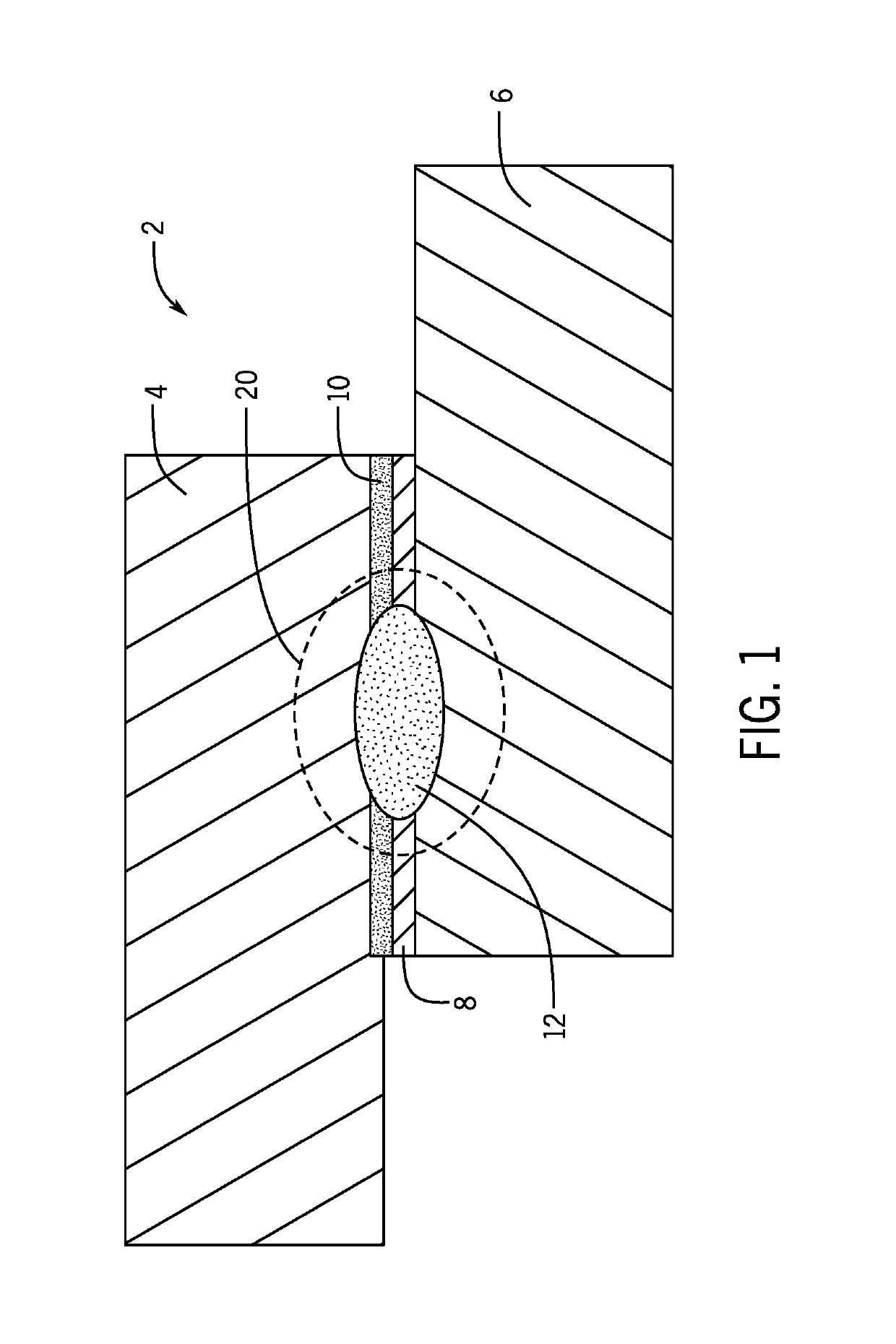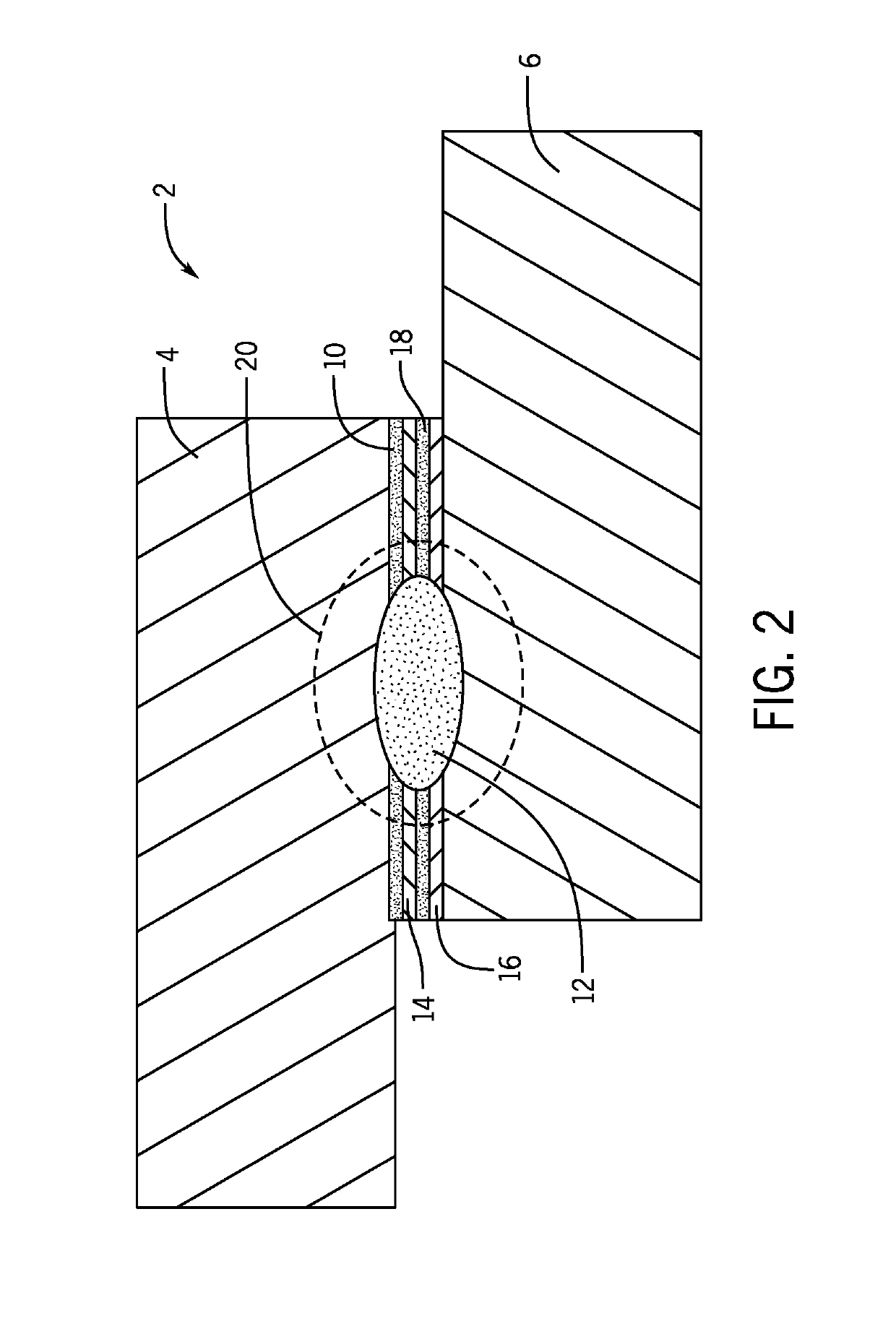Uam transition for fusion welding of dissimilar metal parts
- Summary
- Abstract
- Description
- Claims
- Application Information
AI Technical Summary
Benefits of technology
Problems solved by technology
Method used
Image
Examples
Embodiment Construction
[0011]Referring now to FIGS. 1-4, a welded assembly 2 includes a first component 4 comprising a first metal material, a second component 6 comprising a second metal material that is dissimilar to (i.e. different from) the first metal material, and a transition material 8 arranged between the first and second components 4, 6 and comprising a high entropy alloy, pure element, or alloy sufficiently compatible with the first material and second material. The transition material 8 is ultrasonically welded to the first component 4 via a process such as ultrasonic additive manufacturing (“UAM”) to create a solid-state interface (i.e. UAM weld or ultrasonic weld 10) between the first component 4 and the transition material 8, wherein the UAM weld 10 includes a portion of the first component 4 and the transition material 8.
[0012]UAM is a solid-state (i.e. no melting) metal welding process based on ultrasonic metal welding, which provides fully dense, gapless three dimensional parts. In the u...
PUM
| Property | Measurement | Unit |
|---|---|---|
| Structure | aaaaa | aaaaa |
| Electrical resistance | aaaaa | aaaaa |
Abstract
Description
Claims
Application Information
 Login to View More
Login to View More - R&D
- Intellectual Property
- Life Sciences
- Materials
- Tech Scout
- Unparalleled Data Quality
- Higher Quality Content
- 60% Fewer Hallucinations
Browse by: Latest US Patents, China's latest patents, Technical Efficacy Thesaurus, Application Domain, Technology Topic, Popular Technical Reports.
© 2025 PatSnap. All rights reserved.Legal|Privacy policy|Modern Slavery Act Transparency Statement|Sitemap|About US| Contact US: help@patsnap.com



